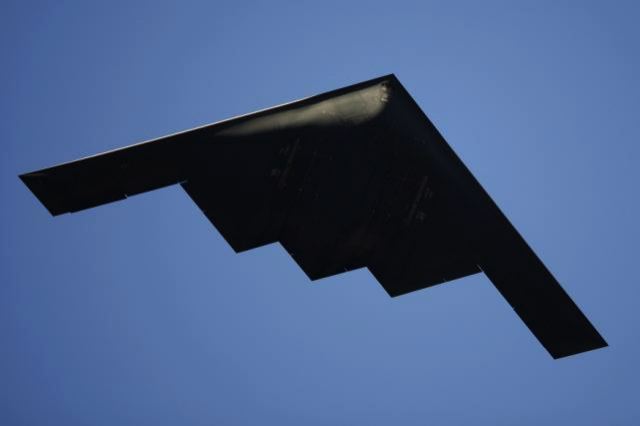

The U.S military sent one of its deadliest warplanes capable of launching nuclear-armed cruise missiles soaring across the Pacific Ocean over the weekend, ahead of President Donald Trump’s visit to the region later this week and a day after Defense Secretary James Mattis warned that North Korea was “accelerating” its nuclear weapons development.
The U.S. military’s Strategic Command told Japan Times in a statement that the mission was aimed at familiarizing the “aircrew with air bases and operations in different geographic combatant commands, enabling them to maintain a high state of readiness and proficiency.” It added that the flight was “a visible demonstration of commitment to our allies and enhancing regional security.”
It’s unclear where exactly the nuclear-capable B-2 stealth bomber went after leaving Whiteman Air Force Base in Missouri. But this wouldn’t be the first time the U.S. sent its deadly warplanes toward the Korean peninsula to convey a message to the family of North Korean leader Kim Jong Un, who succeeded his father in 2014. In 2013, the U.S military directed two B-2 stealth bombers over the region on a round-trip mission. The bombers released inert munitions, not live bombs, near South Korea’s coast.
North Korea held its sixth and most powerful nuclear test in September and its leaders claim it could already strike the U.S. with one of its nuclear weapons. Mattis said Saturday that U.S. would work with South Korea to stop the North’s weapons program.
“North Korea has accelerated the threat that it poses to its neighbors and the world through its illegal and unnecessary missile and nuclear weapons programs,” he said. “I cannot imagine a condition under which the United States would accept North Korea as a nuclear power.”
B-2 bombers are capable of wiping out a small city. The warplane can carry 80 500-pound bombs. The U.S. military used the planes to attack Taliban targets in Afghanistan after the September 11, 2001 terrorist attacks.
South Korea’s government said Wednesday it expected the Trump administration to send help as the president prepared to tour Japan, South Korea and China this week. “The U.S. has pledged to expand the rotational deployment of its strategic assets near the Korean Peninsula,” Chung Eui-young, chief of the National Security Office, said according to Yonhap.